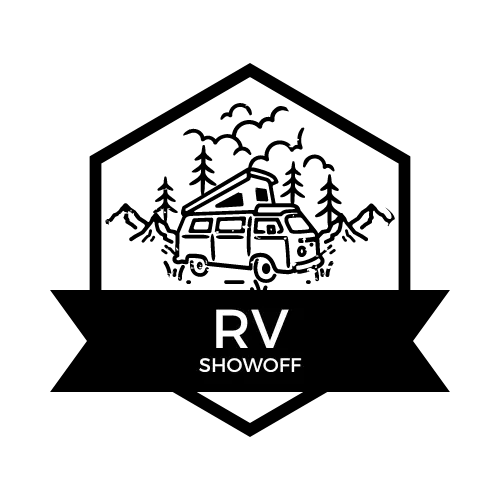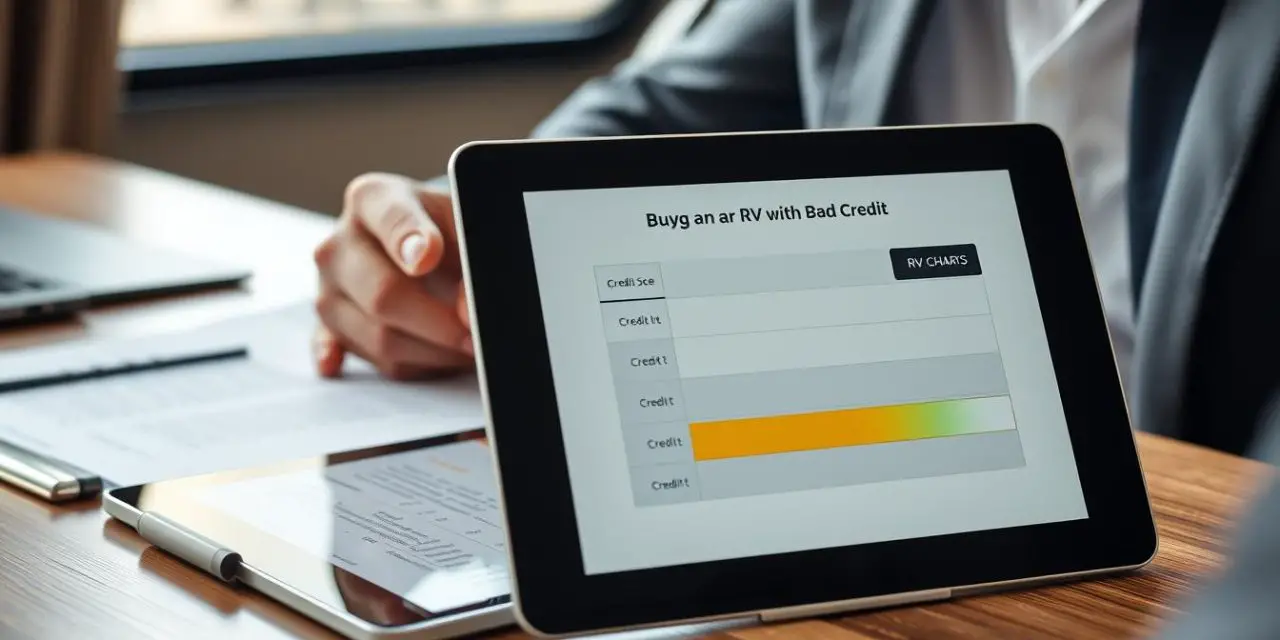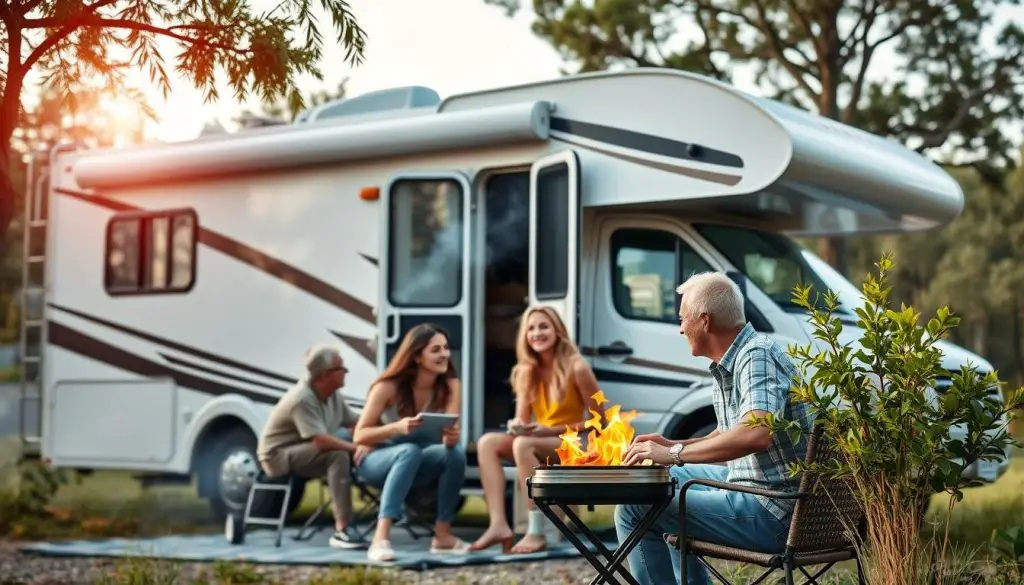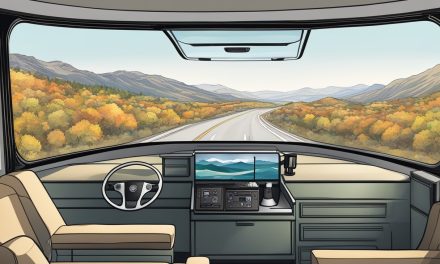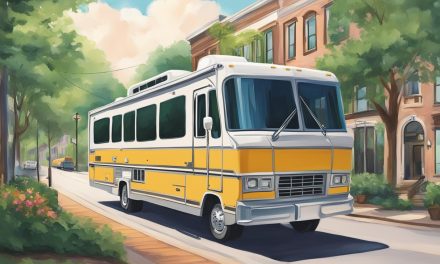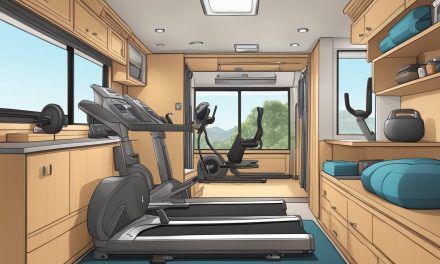Would you like to save this article?
Understanding the Challenge of RV Financing with Bad Credit
Credit scores below 580-630 can make RV financing more challenging but not impossible.
When lenders evaluate your application for an RV loan, your credit score plays a crucial role in their decision-making process. Generally, scores below 580-630 are considered “bad credit” in the financing world, creating several hurdles for potential RV buyers.
Why Bad Credit Makes RV Financing Difficult
RVs represent significant investments, often ranging from $10,000 to over $100,000. Unlike necessities like primary housing or basic transportation, recreational vehicles are considered luxury purchases. This classification makes lenders more cautious about extending credit for them, especially to borrowers with problematic credit histories.
From a lender’s perspective, your credit score indicates how likely you are to repay borrowed money based on your past behavior. Lower scores suggest higher risk, prompting lenders to protect themselves in several ways:
- Higher interest rates – Often 5-15% above rates offered to those with good credit
- Larger down payments – Typically 20-30% of the purchase price versus 10% for good credit
- Shorter loan terms – Reducing the lender’s long-term risk exposure
- Stricter income verification – More documentation of your ability to pay
- Limited selection of lenders – Fewer financing options available
The average interest rate difference between excellent credit (740+) and poor credit (below 580) can exceed 10 percentage points, potentially adding thousands of dollars to your total RV cost over the life of the loan.
Pathways to RV Ownership with Bad Credit
Despite the challenges, several viable options exist for purchasing an RV with less-than-stellar credit. Each approach has distinct advantages and considerations worth exploring.
Specialized Subprime and Bad Credit RV Lenders
Several financial institutions specialize in working with borrowers who have credit challenges. These lenders understand that credit scores don’t tell the complete story and are willing to look beyond the numbers.
Advantages
- Accept credit scores as low as 550 in some cases
- Familiar with unique circumstances behind credit issues
- Offer more flexible qualification criteria
- May consider alternative factors like employment stability
Considerations
- Significantly higher interest rates (often 15-20%)
- May require larger down payments (20-30%)
- Shorter loan terms than traditional financing
- Additional fees and charges may apply
Using a Co-Signer with Good Credit
Adding a co-signer with strong credit to your loan application can substantially improve your approval chances and help secure better terms.
Advantages
- Significantly improves approval odds
- Can help secure lower interest rates
- May reduce down payment requirements
- Access to better loan terms and conditions
Considerations
- Co-signer becomes equally responsible for the debt
- Late payments affect both borrowers’ credit scores
- Can strain personal relationships if payment issues arise
- Co-signer’s borrowing capacity is reduced
When considering a co-signer, have honest conversations about responsibilities and create a written agreement detailing how payments will be handled. Remember that your payment history will directly impact your co-signer’s credit standing.
“Buy Here, Pay Here” RV Dealerships
Some RV dealerships offer in-house financing, making them both the seller and the lender. These “buy here, pay here” arrangements can provide options when traditional financing isn’t available.
Advantages
- More flexible credit requirements
- Simplified application process
- Faster approval decisions
- One-stop shopping experience
Considerations
- Typically higher interest rates (often 15-25%)
- Limited selection of RVs to choose from
- Potentially higher prices than market value
- May use aggressive collection practices
Saving for a Larger Down Payment
One of the most effective strategies for overcoming bad credit is offering a substantial down payment, which reduces the lender’s risk and demonstrates your financial commitment.
While traditional RV financing might require 10% down with good credit, offering 25-30% or more can significantly improve your approval chances with bad credit. This larger initial investment reduces the loan-to-value ratio, making the loan less risky for lenders.
A substantial down payment also demonstrates your financial commitment and ability to save, which can help offset concerns about your credit history. Additionally, it reduces your monthly payments and the total interest paid over the life of the loan.
Down Payment Impact Example
On a $50,000 RV:
- 10% down = $5,000 down payment, $45,000 financed
- 30% down = $15,000 down payment, $35,000 financed
- Result: Lower monthly payments and potentially 2-4% lower interest rate
Private Party Sales and Owner Financing
Purchasing directly from an RV owner can open up alternative financing arrangements that bypass traditional lending requirements.
Advantages
- Flexible terms negotiated directly with the seller
- No formal credit checks in many cases
- Potentially lower interest rates than subprime lenders
- Faster, simpler transaction process
Considerations
- Limited selection of available RVs
- Sellers may require larger down payments
- Legal documentation must be carefully prepared
- May not help build credit if payments aren’t reported
If pursuing owner financing, ensure all terms are clearly documented in a written contract. Consider having an attorney review the agreement to protect both parties’ interests. Include details about payment amounts, due dates, interest calculations, late payment policies, and title transfer conditions.
Improving Your Odds of RV Financing Approval
Beyond exploring alternative financing options, several practical steps can strengthen your application and improve your chances of securing RV financing despite credit challenges.
Check and Understand Your Credit Report
Before applying for financing, obtain copies of your credit reports from all three major bureaus (Equifax, Experian, and TransUnion). Review them carefully for errors or outdated information that might be hurting your score.
Look for and dispute any inaccuracies, such as accounts that aren’t yours, incorrectly reported late payments, or debts that have already been paid or settled. Even small corrections can sometimes boost your score enough to make a difference in loan terms.
Understanding exactly what’s in your report also helps you address potential lender concerns proactively. If there are legitimate negative items, prepare to explain the circumstances, especially if they resulted from one-time events like medical emergencies or job loss rather than ongoing financial mismanagement.
Free Credit Report Access
You’re entitled to one free credit report annually from each major bureau through AnnualCreditReport.com. Many financial institutions and credit card companies also offer free credit score monitoring.
Get Pre-Qualified to Understand Your Budget
Seeking pre-qualification from several lenders gives you a realistic picture of what you can afford and the terms you might expect. This step doesn’t guarantee approval but provides valuable information for your RV search.
Pre-qualification typically involves a soft credit inquiry that doesn’t impact your credit score. It gives you approximate loan amounts, interest rates, and terms you might qualify for based on basic financial information. This knowledge helps you focus your RV search on vehicles within your realistic budget.
Having pre-qualification information also strengthens your position when negotiating with RV sellers. It demonstrates you’re a serious buyer who has already taken steps toward securing financing.
Shop Around and Compare Multiple Lenders
With bad credit, interest rates and terms can vary dramatically between lenders. Taking time to explore multiple options can save thousands of dollars over the life of your loan.
| Lender Type | Typical Minimum Credit Score | Interest Rate Range | Maximum Loan Term |
| Traditional Banks | 660+ | 5-10% | 180-240 months |
| Credit Unions | 620+ | 5.5-12% | 180 months |
| Online Lenders | 600+ | 7-15% | 144 months |
| Specialized RV Lenders | 550+ | 9-18% | 180 months |
| Dealership Financing | 500+ | 12-25% | 144 months |
When comparing offers, look beyond the monthly payment to understand the total cost of financing. Consider interest rates, loan terms, fees, prepayment penalties, and down payment requirements. Remember that a lower monthly payment with a longer term often means paying significantly more in total interest.
Loan Application Timing Tip
Submit all loan applications within a 14-day period. Credit scoring models typically count multiple inquiries for the same type of loan within this window as a single inquiry, minimizing the impact on your credit score.
Important Considerations and Risks
While buying an RV with bad credit is possible, it’s essential to understand the potential pitfalls and long-term implications of your financing decisions.
The True Cost of High-Interest Financing
The difference between good credit and bad credit interest rates can add thousands or even tens of thousands of dollars to your total RV cost. Before committing to a high-interest loan, calculate the total amount you’ll pay over the entire loan term.
For example, on a $30,000 RV loan with a 7-year term, the difference between 7% and 17% interest is approximately $14,000 in additional interest payments. Consider whether this premium is worth the immediate RV ownership versus waiting and improving your credit first.
Interest Rate Impact Example
$30,000 RV loan for 7 years:
- At 7% interest: Monthly payment = $443, Total paid = $37,212
- At 17% interest: Monthly payment = $610, Total paid = $51,240
- Difference: $167 more per month, $14,028 more overall
Risk of Repossession
When financing an RV with bad credit, lenders typically have stricter repossession terms due to the higher perceived risk. Missing even a few payments could result in losing your RV and further damaging your credit.
Before finalizing any financing, carefully review the repossession terms in your loan agreement. Understand how many missed payments trigger repossession proceedings, whether you’ll receive warnings, and what rights you have in the process. Some subprime lenders may even install GPS tracking devices to facilitate repossession if payments are missed.
Long-Term Financial Commitment
RV ownership involves ongoing costs beyond the monthly loan payment. Before committing to financing, ensure your budget can accommodate all associated expenses.
Ongoing RV Expenses
- Insurance: $800-$4,000 annually depending on RV type and coverage
- Maintenance: Typically 1-2% of the RV’s value annually
- Storage: $50-$450 monthly if you can’t park at your residence
- Fuel: Class A motorhomes often get only 6-10 MPG
- Campground fees: $25-$100+ per night depending on location
First-Year RV Ownership
Beyond loan payments, budget approximately $5,000-$10,000 for first-year ownership costs including insurance, maintenance, accessories, and campground fees.
Consider whether these ongoing costs fit comfortably within your budget, especially if you’re already allocating more toward higher loan payments due to bad credit financing. An RV that sits unused because you can’t afford to operate it represents a significant financial burden.
Conclusion: Is Buying an RV with Bad Credit Right for You?
Purchasing an RV with bad credit presents challenges but remains achievable with proper planning and realistic expectations. By exploring specialized lenders, considering co-signers, saving for larger down payments, investigating dealer financing, or pursuing private party sales, you can find pathways to RV ownership despite credit obstacles.
The key is balancing your desire for immediate RV ownership against the financial implications of higher-cost financing. For some, accepting higher interest rates makes sense if RV adventures are a priority and the payments fit comfortably within their budget. For others, temporarily postponing the purchase to improve credit first may prove more financially prudent.
Remember that RV ownership should enhance your life, not create financial stress. By thoroughly researching your options, understanding the true costs involved, and making informed decisions based on your unique circumstances, you can determine the best approach to achieving your RV dreams—whether that means proceeding with financing now or creating a plan to improve your position first.
What is the minimum credit score needed for RV financing?
While traditional lenders typically require scores of 660+, specialized RV lenders may work with scores as low as 550. Some “buy here, pay here” dealerships may consider scores of 500 or even lower, though terms will be less favorable. Remember that higher scores generally translate to better interest rates and loan terms.
How much should I save for a down payment with bad credit?
With bad credit, aim for a down payment of at least 20-30% of the RV’s purchase price. Larger down payments significantly improve approval odds and may help secure better interest rates. Some lenders may accept 10-15% down with compensating factors like stable income or limited recent credit issues.
Can I refinance my high-interest RV loan after improving my credit?
Yes, refinancing is a viable strategy. After making consistent, on-time payments for 12-18 months and improving your credit score, you may qualify for refinancing at a lower interest rate. This approach allows you to secure the RV now while creating a path to more affordable payments in the future.
